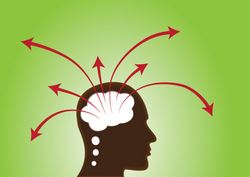Neural encoding patterns for decision-making
Information processing and computation in the brain is a complex task involving multiple neuronal activity. To study such cognitive tasks, it is essential to determine the underlying neural correlations. Recently, scientists made significant headway in recording and quantifying neural directional correlations under the umbrella of the NEUCOD (Information-theoretic approach to infer encoding patterns in a decision making process) project. To begin with, they selected a simple but effective neural coding inference method that can track stimuli information from source neuron and determine its distribution. This system enables scientists to extract patterns of distributed information from simultaneous neuronal recordings during the different stages of a task. Researchers obtained a dataset of simultaneous cortical recordings from two monkeys during a decision making task. Pairwise directional correlation between several neuronal pairs were estimated during the different task stages, namely perception, working memory, decision making, and motor report. Application of the neural coding inference method for the analysis of primate datasets obtained during this somatosensory discrimination task produced interesting results. The encoding patterns suggest that the neuronal correlation pathways in monkeys are activated for specific stimulus features or decision reports. In other words, information processing is task-specific with active encoding patterns seen in certain cortical areas of the brain during the task. Moreover, this information is encoded in disjoint correlation pathways and the sensory and behavioural information are distributed at different timescales. Project outcomes were disseminated via journal publications as well as presentations at conferences and workshops. Future research efforts could focus on quantifying information between the thalamus and cortex in the brain. This would aid in the development of a mechanistic model on neural information processing. Despite the end of the NEUCOD project, researchers are working on the functional interpretation of EEG recordings from epileptic patients. Study outcomes should help researchers determine the neural correlates of epileptic cognitive deficit in humans. This could find application in seizure prediction and aid neurosurgeons in better localisation of the epileptic focus for potential brain resection.
Keywords
Neural, encoding pattern, decision making, information processing, directional correlation, neural coding inference, epileptic, somatosensory discrimination

